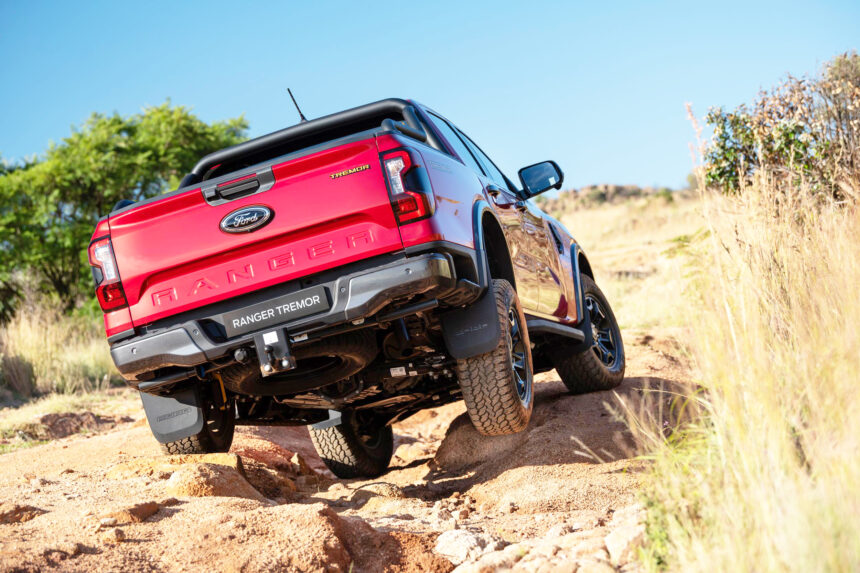Namibia’s rugged terrain, mountainous landscapes and vast open spaces make it a paradise for off-road enthusiasts.
From the winding passes to iconic trails and the scenic mountain routes, Namibia offers some of the most exhilarating and challenging 4×4 routes in the world. With a strong off-roading culture and passionate community of clubs and adventurers, the Namibian terrain is the ideal playground for both novice and experienced off-roaders.
Off-road driving, however, demands more than just a capable vehicle.
It requires skill, preparation and a healthy respect for nature.
Whether you are joining a local 4×4 club for a weekend trail or planning an extended overland expedition, understanding the fundamentals of off-road driving is crucial to ensuring safety, preserving the environment and maximising enjoyment.
Understand your vehicle
The foundation for off-roading starts with knowing your vehicle’s capabilities and limitations.
Familiarise yourself with your vehicle’s 4×4 drive capabilities (4H, 4L), diff locks, traction control systems, ground clearance, as well as approach and departure angles.
The approach angle is the maximum angle your vehicle can climb or descend toward an obstacle without the front bumper hitting it.
The departure angle is the maximum angle the vehicle can descend or drive away from an obstacle without the rear bumper scraping the ground.
The Ford Ranger has an impressive front approach angle of 30 degrees and rear departure angle of 25.6 degrees – the latter is 23 degrees when a towbar is fitted.
Available on certain Ranger derivatives such as the Tremor, Wildtrak and Platinum is an on-demand four-wheel drive system with 2H, 4A, 4H and 4L.
This allows the Ranger to be driven in four-wheel drive on high-traction surfaces via its 4A (automatic) mode.
When selected, the system continuously distributes power between the front and rear axles for optimum performance in all on-road conditions.
There is also a two-wheel drive (2H) mode which disengages the front axle for rear-wheel drive only.
The 4H setting locks power 50/50 between the front and rear axles while 4A engages four-wheel drive automatically when needed.
In normal driving conditions, it acts like 2H (two-wheel drive), but when it senses wheel slip, it sends power to the front wheels.
The 4H setting is great on gravel roads, sand, mud or moderately rough terrain while 4L provides extra torque at lower speeds and is suited to steep hills and rocky terrain.
Modern 4x4s often come equipped with advanced technology like Hill Descent Control and Terrain Management Systems.
Certain Ford Rangers are fitted with a Drive Mode selector via the rotary dial, comprising Normal, Eco, Tow/Haul, Slippery, Mud/ Ruts, Sand and Rock Crawl. The system automatically adjusts the throttle response, gearshifts, traction and stability control, as well as the steering and braking system to optimise vehicle performance to suit the terrain dependent on the mode selected.
The Ranger features an electronic rear-differential lock on all XL, XLT and Wildtrak models, which can be activated via the SYNC® screen or by the centre console button. A differential lock allows both wheels on a specific axle to turn at the same speed providing additional traction when you are off-roading.
The Ranger Raptor is equipped with a front and rear differential lock for extra traction.
Read the terrain
Every off-road environment presents unique challenges.
Sand, mud, rocks and steep inclines all require different techniques.
Learning to “read” the terrain ahead, whether it is assessing how deep a mud patch is or how loose gravel might affect grip, can be the difference between a successful climb and getting stuck.
Ranger derivatives like the Tremor and Wildtrak X are equipped with the off-road SYNC screen with a 360-degree camera system that makes manoeuvring in tight spaces an absolute cinch.
Also available on these derivatives is the new Trail Turn Assist feature.
The system brakes the inside wheel when negotiating tight bends in off-road conditions below 19km/h, reducing the vehicle’s turning radius by up to 25 percent to help navigate around obstacles.
Throttle control
Gentle, steady throttle control is essential.
The golden rule of 4x4ing safely is tackling challenges or obstacles “as slow as possible, as fast as necessary”.
In many cases, too much power can cause wheels to spin and lose traction.
Understanding when to use momentum, such as driving in sand dunes, and when to take it slow (such as descending a rocky slope) is key to safe and efficient driving.
Recovery know-how
Even the most skilled drivers can get stuck.
Basic recovery skills and equipment are essential.
This includes knowing how to use a recovery strap, and where to find your recovery points.
Never go off-roading alone.
Having another vehicle nearby can be a lifeline in tricky situations, and an extra set of hands to help dig the sand away is always welcome.
Before you hit the trails, here are some essential tips to help you stay safe, protect the environment and make the most of your journey.
Tyre pressure
Adjusting your tyre pressure can significantly improve traction.
Lowering it slightly when driving on sand or rocky surfaces increases the tyre’s contact patch, enhancing grip.
Just remember to inflate them again before returning to the road.
Pack smart
Always carry basic recovery gear (snatch strap, shackles and spade), a first-aid kit, air compressor and enough water and food.
A GPS, maps and a reliable communication device (like a satellite phone or two-way radio) are also highly recommended, especially in remote areas.
Tread lightly
Respect the environment. Stay on designated trails to avoid damaging sensitive ecosystems, and always leave the place as you found it.
Join a community
Off-road clubs and forums are great places to learn, share experiences, and find adventure companions. They also host regular training days and events to help drivers improve their skills in a safe and supportive environment
Mastering the art of off-road driving is not just about handling tough terrain.
It is about building the confidence, skill and understanding to tackle any adventure with ease.


